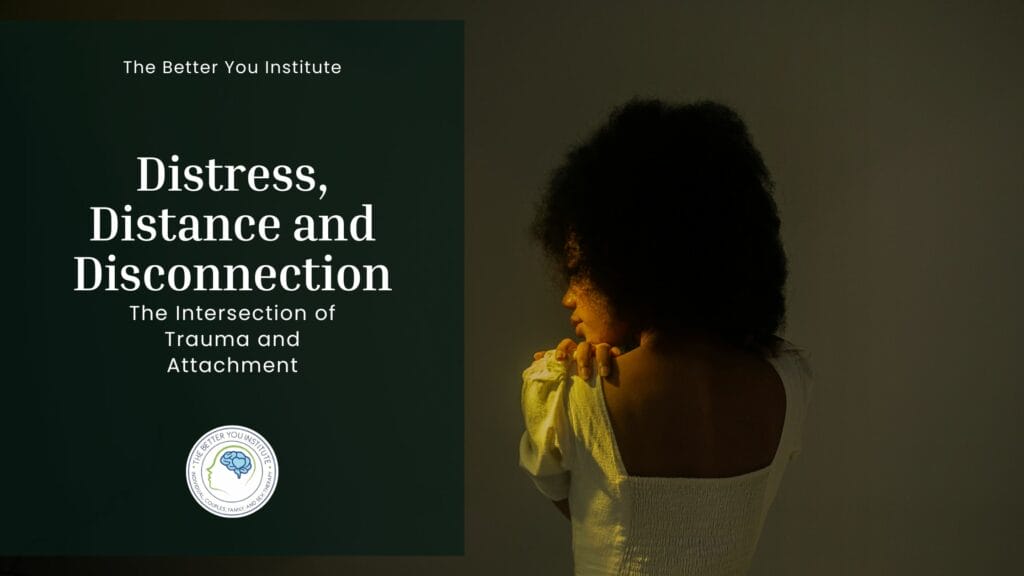The creation of boundaries is almost like playing a sport. Boundaries take time and practice. Setting boundaries is essential in friendships, relationships, family, and within yourself. People are often resistant to setting boundaries, finding them difficult to establish due to feelings of guilt or fear. In this article, you will learn what it means to set different types of boundaries, what they look like, and why they are essential.
Table of Contents
What are boundaries?
What comes to mind when you think of boundaries? Maybe you thought of a line that divides two areas or a border where one thing ends, and another begins. I want to introduce you to what personal boundaries are. First, to place personal boundaries, you must identify your values. Personal boundaries are then the preservation of these values by practicing open communication and asserting your values to others.
Personal boundaries are the practice of open communication and asserting personal values to preserve and protect against them getting compromised or violated. I want you to imagine an imaginary fence around your thoughts, feelings, values, and desires that belong directly to you. We want this fence to be strong but not indestructible. If the fence is too loose, we allow unwanted things into our space. If the fence is too strong, we become rigid and close ourselves off from others. The fence should be sturdy enough to offer protection while keeping you connected to others.
Finding the balance of a healthy boundary (aka not too loose, not too rigid) can take time. However, you will see a change in your relationships and yourself once you establish effective personal boundaries. Personal boundaries are limits and rules we set for ourselves within relationships. Think of personal boundaries as certain limits you have. Once someone crosses the limit, they have crossed a boundary you set.
Consistency with Boundaries
Personal boundaries have everything to do with you! You have the right to set boundaries and to change them at any time. There are a few critical parts of boundaries. These key parts include communicating, acting on, and staying consistent with them. Setting a boundary is meant to be expressed calmly rather than angry. It’s sometimes hard to remain calm in the moment when someone crosses your boundaries. Again setting boundaries takes practice and consistency. You may also want to teach yourself grounding techniques for those more intense moments. It is best if you stay consistent with your boundary because when you aren’t consistent, it sends a confusing message to the boundary receiver.
Think about a child who throws a tantrum in the grocery store because they’ve asked to buy a treat they saw. The caretaker sets a boundary, repeatedly saying, “no, I will not buy you that treat.” However, the child continues to be upset and starts to beg for the treat. The caretaker eventually gives in and buys the treat, so the child will stop begging and throwing a tantrum. The child has learned that each time they throw a tantrum when they don’t get their way, eventually, that caretaker will give up on their boundary and give them what they want. The same concept works for adults. This type of interaction has the potential to sow resentment. If you can communicate, act, and stay consistent with your boundaries (aka wants, level of comfortability, and values), you are opening the door to healthy and fulfilling relationships.
On the podcast: “Boundary setting: how to do it,” they state, “if something is hysterical, it’s historical.” As you probably know, history repeats itself. The above quote talks about something so profound in your life that it hits deep within you (hysterical), and you will remember it whether you want to or not (historical). For example, when you were young – maybe 10 or 11 – your dad was supposed to pick you up from school but forgot. You sat in the principal’s office wondering what you did wrong to make your family leave you. It was terrifying! Still, thinking of this day sends chills up your spine. This experience penetrated you and got stored as an archetypal memory. Indeed, this emotional memory got stored deeply in you. Your mind and body learn from your history.
Now, as an adult, you do not entertain people who are late. You decide not to be friends with people who are notoriously late. You reprimand your employees when they are late, and you’ve broken up with partners because they couldn’t show up to dates on time. You have set a boundary around people being late, so you never have to feel that terrifying emotion you felt sitting alone in the principal’s office, wondering if your family loved you. Your boundary about timeliness protects you from experiencing anything close to what you went through that day. Your timeliness boundary also maintains relationships as no one you have chosen to keep in your life violates that boundary. Therefore you don’t feel the need to exile them out of protection. Thus, you view them and yourself as emotionally stable in the relationship rather than terrified they will never come for you and that you will be alone for the rest of your life.
Remember, if something is hysterical, it’s historical, which means that something activated you in a way where you felt something substantial. For example, if a close friend crosses a boundary, you might feel really upset. You have a strong feeling, and it might stick with you. Relationships are not a free for all. The creation of healthy relationships stems from respecting other people’s wants and needs. Some individuals have an easier time setting certain boundaries than others. Each person is different in their own way with setting boundaries, and that’s totally normal. Our life experiences shape our identity, directly affecting how we approach different situations. The main takeaway is that you should listen to your emotions and be open to the idea of setting boundaries.
Examples of values and boundaries
- Boundaries are created based on things you value. To set boundaries, consider your body, space, touch, what you eat and drink, verbal interactions, and when you’re active and resting. Below you will see how boundaries are created based on your values.
| Value | Boundary Created | How The Boundary Plays Out |
| You value comfort | Not hugging someone you just met as it’s uncomfortable | I do not hug people I just met |
| You value rest | Prioritizing time for you when your body needs rest | I don’t participate in anything that will impose upon me getting 8 hours of sleep every night |
| You value respect | Not wanting to be spoken down to because that makes me feel disrespected | I remove myself from a conversation where someone is speaking down to me |
| You value sobriety | Wanting to avoid alcoholic drinks. | When I go out with friends, I ask them to respect my decision not to drink alcohol. If a friend pressures me and doesn’t respect my boundary, I remove myself from the situation |
| You value private space | I don’t want people going into my bedroom because that makes me feel uncomfortable | I close the door to my bedroom, so people don’t enter my private space. |
Boundaries are an honoring of your needs, wants, goals, and values. Boundaries can look different to each person. In the same vein that you are setting boundaries for yourself, others may also be setting boundaries. Open communication can be helpful to be in the know of other’s boundaries and how they may impact you and vice versa. You are entitled to set boundaries for yourself. If others take issue with your boundaries, you may want to evaluate what that means and how you’d like to proceed.
Boundaries in different categories
Believe it or not, there are different types of boundaries. Some common boundaries are physical, emotional, sexual, spiritual or religious, financial and material, and time. In addition, there are different categories for personal boundaries. We all have various parts of our lives that we respond to differently. For example, a person might be okay with physical touch around people, but they are not okay with being emotionally vulnerable. Each person has their level of comfort in certain areas and may experience discomfort in others. Boundaries allow us to create safety in the areas where we experience distress.
Boundaries in specific categories include:
- Physical boundaries: who you allow into your physical space (home, car, bedroom, etc.), how you keep your physical space (messy vs. tidy); what you do or don’t do with your physical body, and what you allow others to do to your body
- Emotional boundaries: limits you set regarding what you’re comfortable sharing emotionally with others, prioritizing your emotions, and not becoming enmeshed in other people’s emotions
- Sexual boundaries: who you allow to touch and see your body and deciding what you’re comfortable doing with others
- Time boundaries: how you spend your time, how you prioritize your time, how you share your time, and what your time is worth
- Financial/ Material boundaries: limits you set with your finances and materials; asking yourself who you will share and not share money/materials with
- Workplace boundaries: limits you set at work with yourself and with others
As you can see, there are a lot of different areas where boundaries can be present. You will notice that some of these boundaries overlap in your life. The more comfortable you are with setting boundaries, your relationships will become healthier. Ask yourself if anything came up for you when reading about the specific categories of personal boundaries.
Some questions you can ask yourself are:
- What specific boundary from above stood out to me and why?
- How did I emotionally and physically respond as I read them?
- With what boundaries do I struggle?
- Is it hard to balance rigid vs. loose boundaries?
- What boundaries are easy to set and why?
- Do any of these boundaries scare me?
- If yes, what part of you is being activated?
- Do you find it difficult to set specific boundaries with specific people? In a particular place? At a certain time? In a specific mental state?
- If yes, which boundaries and which people specifically?
- What do you make of that?
- What emotions are present when you think of boundaries?
Physical boundaries
Physical boundaries include your privacy, body, and personal space. Think of this type of boundary as a bubble around your body. (The Pandemic probably shined a light on how big your physical boundaries are or are not.) Some individuals don’t mind people in their personal space, and others struggle with this. Everyone has their personal preferences and should expect people to respect them. (Exceptions to this statement are children. Adults need to teach boundaries to children, both how to set them for themselves and respect them in others.) To establish healthy boundaries, you must know what’s appropriate in different situations and relationships. Sharing your physical boundaries can improve your relationships. However, a violation of this boundary is when someone invades your privacy, body, or personal space when you don’t want them to.
Examples of physical boundaries:
- You might tell someone you prefer to handshake when saying hello rather than hugging
- Setting a password on your phone to prevent people from going through the device
- You express where you do and do not want to be touched by your partner and what you will do if you get touched in the places you do not want to get touched (e.g., you will put your clothes back on, you will leave the room, you will stop kissing them, etc.)
- After a long day of work, you need 10 minutes to decompress by yourself before you go to a social event
Emotional boundaries
Emotional boundaries tend to be more challenging when it comes to establishing them. To set emotional boundaries, you must be in touch with your emotions. Being in touch with your feelings can be hard sometimes! Emotions aren’t very tangible. Because emotional boundaries aren’t as concrete as physical ones, crossing emotional boundaries may happen without us realizing it until afterward. Instead, we often have to listen to our gut and be in tune with our emotions. Healthy emotional boundaries are when you can separate your emotions from another person. Keeping your emotions separate can protect and prioritize your feelings and thoughts. When you hold other people’s emotions, it can be heavy and tiring.
Setting emotional boundaries allows you to honor your feelings and not take care of or feel responsible for other people’s feelings. It is important to keep in mind that your feelings should not be criticized or invalidated by another person. We are all allowed to have feelings. However, we should honor, respect, and take accountability for our feelings without putting them on someone else.
Examples of emotional boundaries:
- Stating you are sharing something with your partner to feel heard, and if you feel unheard, you will stop the conversation
- Not engaging in triggering topics
- Not taking on other people’s emotional burdens when you don’t have the capacity
- Not allowing someone else’s mood to influence yours when they don’t align with your mood
- Taking responsibility for your own emotions and not blaming others
- Deciding not to disclose something to someone that doesn’t feel safe to you
- Being selective in the timing of your self-disclosures
Sexual boundaries
Sexual boundaries are so important! These boundaries involve a mutual understanding of respect, communication, consent, limitations, desires, and expectations around physical and emotional intimacy. Communication with a partner about your sexual boundaries can happen after you decide on your comfort level. Sexual boundaries become violated when there’s unwanted touch, pressure to engage in sexual acts, inappropriate communication, or a lack of consent.
Examples of sexual boundaries:
- I will not engage in sexual relations until we discuss limitations and expectations outside the bedroom
- I will say no to sexual activities that I do not like or that hurt me.
- I will not continue to be in a relationship with someone if they speak to me in a demeaning way
- I only participate in cunnilingus, blowjobs, and sexual intercourse. I do not participate in anal sex, If you ask me for anal, I will put my clothes on and go to the living room
Time Boundaries
Holding boundaries around time can help us live happier and healthier lives. This type of boundary refers to the way a person uses their time. Establishing healthy time boundaries allows separation in different areas of a person’s life (work, school, personal, hobbies, relationships). Violation of time boundaries happens when people or an area of life take up too much of your time without consent. Overextending ourselves also violates our boundaries with time. For example, if someone has people-pleasing tendencies, it can be hard to stick to their boundaries around time because they don’t want to disappoint people. Another way we violate time boundaries is when we procrastinate.
Examples of time boundaries:
- Planning your week out ahead of time so you can divide your time appropriately
- Saying no when someone demands too much of your time
- Give yourself permission to leave or cancel an appointment if that time or your time isn’t being met
- If you are planning to grab lunch with someone who is normally late, communicate this to them ahead of time- let them know you will be leaving after a certain amount of time has passed.
- Spend extra time with your child when they are sick
- Call out of a meeting to go to your child’s baseball game
Financial/ Material Boundaries
Financial or material boundaries usually refer to money and material items. Economic boundaries are the limits you set for your money. Financial boundaries might be boundaries you put between yourself and others or just with yourself. The goal is to create a healthy balance for you, your finances, and your relationships. Material boundaries refer to items and possessions like jewelry, furniture, money, home, car, clothing, etc. Financial boundaries can become violated when someone abuses or doesn’t respect your money. Violation of material boundaries is when someone damages or steals your possessions or when they pressure you into giving or lending your items. Healthy boundaries for your finances and material things include setting limits on what you will share and with whom.
Examples of financial/ material boundaries:
- Be assertive and communicate your financial/ material limits: “I will only dine at a $$ or less restaurant.”
- Set rules and expectations
- Ex: You cannot borrow my car unless you ask permission, and even then, I may still say no.
- Put your own financial needs before others
- Ex: I will pay for what I ordered instead of splitting the bill. I can do the calculations.
- Donate to a cause you feel strongly about
- Pay for your child’s college
- Buy off-brand items
Workplace boundaries
Workplace boundaries can differ in each profession. Different careers draw boundary lines at differing points, but boundaries are still essential in all occupations. Workplace boundaries help reduce stress, fatigue, and burnout. Workplace boundaries are the physical, emotional, and mental limits created to protect yourself from burnout. Workplace boundaries are related to work but may take place outside of work as well as at work.
Examples of workplace boundaries:
- Saying no to working on the weekends
- Not responding to work emails when off the clock
- Take time off when needed
- Ex: Use your paid time off if provided or take mental health days
- Establish boundaries with coworkers
- Ex: not oversharing or entangling yourself in office gossip
- Not taking on others’ part of projects to help out
- Deciding not to cover for a coworker when they’re doing something you do not approve of or you feel is unethical
- Turning in work on time and holding yourself accountable to that
- Answering emails respectfully
- Participating in meetings
- Taking the initiative on a project
Fear of boundaries
As you can see from what you just read, boundaries are essential. Yet, you might ask yourself, why do people fear setting boundaries? People may struggle with setting boundaries for various reasons:
- They have difficulty putting themselves first.
- They struggle to say no to others.
- They are afraid they will hurt or upset someone.
- They may have learned to be small and take up as little space as possible. Therefore, having minimal boundaries to begin with.
Most people don’t understand that setting boundaries allow us to have healthier and happier relationships. When we don’t set healthy boundaries, we don’t prioritize ourselves. When we don’t set healthy boundaries, we are more likely to spend most of our time and energy doing what others want over what we want to do. Without limitations, there is potential for us to feel burnt out, resentful, or angry towards others or ourselves. Not setting boundaries can leave us feeling uncared for, lonely, or misunderstood.
People are often resistant to boundaries and find them difficult to set due to feelings of guilt, shame, or fear. The guilt comes from the perception that boundaries are putting yourself first, which many interpret as selfish, so feeling like you’re doing something terrible. Shame can come from not feeling deserving of good things, including having your needs met or your space respected. Therefore, boundaries are shameful as they juxtapose what you know to be “true” (e.g., undeserving) about yourself and what the boundary could provide for you (e.g., having physical space you need to feel comfortable). Finally, fear could present as worry that the other person will respond poorly to the boundary (e.g., push the person away or upset them).
It is essential to remember that if someone doesn’t respect your boundaries, they don’t respect you. People should be able to appreciate and prioritize another person’s limits. When you stop yourself from setting healthy boundaries, you often will see consequences.
Consequences from lack of boundaries:
- Negative emotions
- Resentment
- Frustration
- Aches
- Lack of sleep
- Physical symptoms
- The immediate reward of someone not getting upset with you, prolonged feelings of resentment, anger, isolation
5 Effective ways to set boundaries
- Know your limits
- Clearly define your physical, emotional, sexual, time, financial/material, and workplace boundaries with strangers, work colleagues, friends, family, and intimate partners.
- Think of what emotions come up for you as people or activities cross your boundaries. Did it feel good when your limits were crossed? Probably not. What boundary was crossed? Take time to either type or write out your limits within each area of your life. For example, what are your limitations in work vs. in your intimate relationship? Understanding our limits allows us to set boundaries to feel comfortable, safe, and good within our interactions and settings.
- Openly communicate your boundaries to people
- Communication is key! We aren’t mindreaders, so being able to communicate your boundaries is essential when it comes to setting them. Tell yourself that expressing your boundaries to the people around you opens the door to healthy relationships. Say your boundary out loud in a way that lets the other person know you are serious but that they have room to discuss this with you.
- Don’t be afraid to say “no” to things that don’t serve you
- Say no to things that don’t benefit you or that don’t serve you. Put yourself and your needs first before others. You are not being selfish for protecting your time and energy.
- Be assertive
- Let the person know when they crossed your boundaries. At first, being assertive can be scary, so start small and work your way up. Start being assertive in areas where you already feel confident and comfortable. For example- did the cashier overcharge you? A small way to practice assertiveness is by acknowledging the cashier’s experience while asking them to correct the charge. Over time, you can build up to being assertive with your boundary setting by acknowledging the other person’s experience of your boundary while still setting and holding your boundary.
- Take time for yourself
- Take time to practice self-care! Do things that you enjoy and engage in things that bring you happiness. These activities may be when you don’t have to worry about setting boundaries. For example, taking time to engage in grateful thinking to help recenter and reconnect with the people and things around you.
Are you Struggling to Learn How to Set Boundaries?
Boundary setting is not only good for you but also for the people around you. The most important thing to remember is that setting boundaries is essential to creating healthy relationships. It’s okay if setting boundaries takes time and practice because it will set you up for lasting and fulfilling relationships in the future. If you struggle to learn how to set boundaries or permit yourself to set them, you’re not alone. Setting boundaries takes practice and time. Establishing boundaries lets people know and understand your limits and become aware of what you are and aren’t okay with. Setting boundaries improve interpersonal interactions by taking the guesswork out. Boundaries are directions for others on how to interact with you. If you want to start learning how to set boundaries or have questions about starting the process, feel free to schedule an appointment at The Better You Institute with one of our Philadelphia therapists. Call us today at 267-495-4951 to set up your appointment.
Meet The Author:

Claire Savage, M.Ed
Professional Counselor
Claire Savage, M.Ed, a Professional Counselor and Practicum and Intern Liaison, is known for her caring and open-minded nature. Her background as a first-generation Irish American has shaped her focus on identity development in therapy, helping clients understand their passions, purpose, and values. Drawing from her Division I Rowing experience at Temple University, Claire emphasizes the importance of mental health and the role of failure in personal growth. She approaches therapy like a puzzle, using person-centered, experiential, somatic, emotionally focused, and cognitive behavioral approaches to help clients gain new perspectives and control over their lives. Claire holds a Bachelor’s and Master’s in Counseling Psychology from Temple University. Passionate about Philadelphia, she enjoys exploring coffee shops, attending workout classes, and spending time with loved ones. Claire is dedicated to guiding clients on their wellness journey.
Learn more about Claire Savage ⇒







